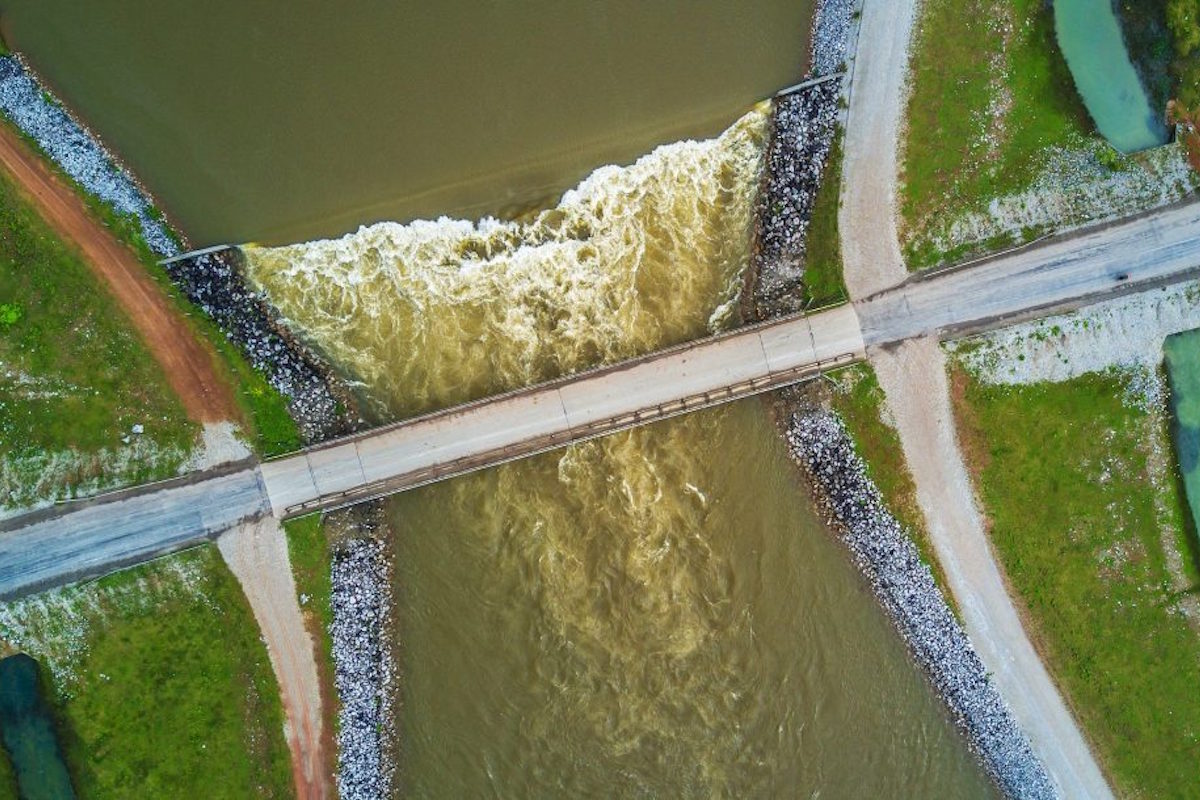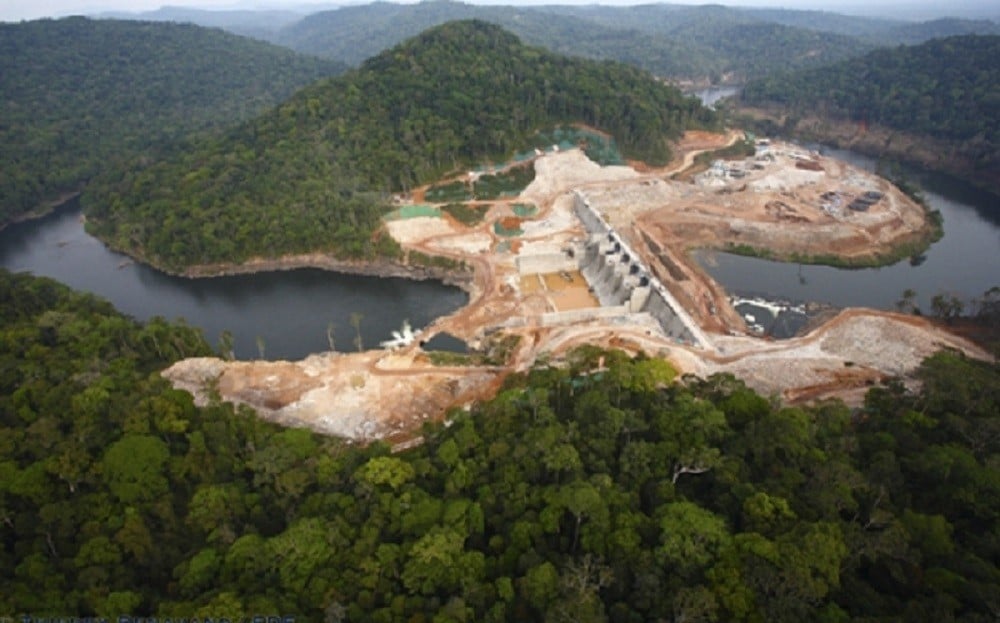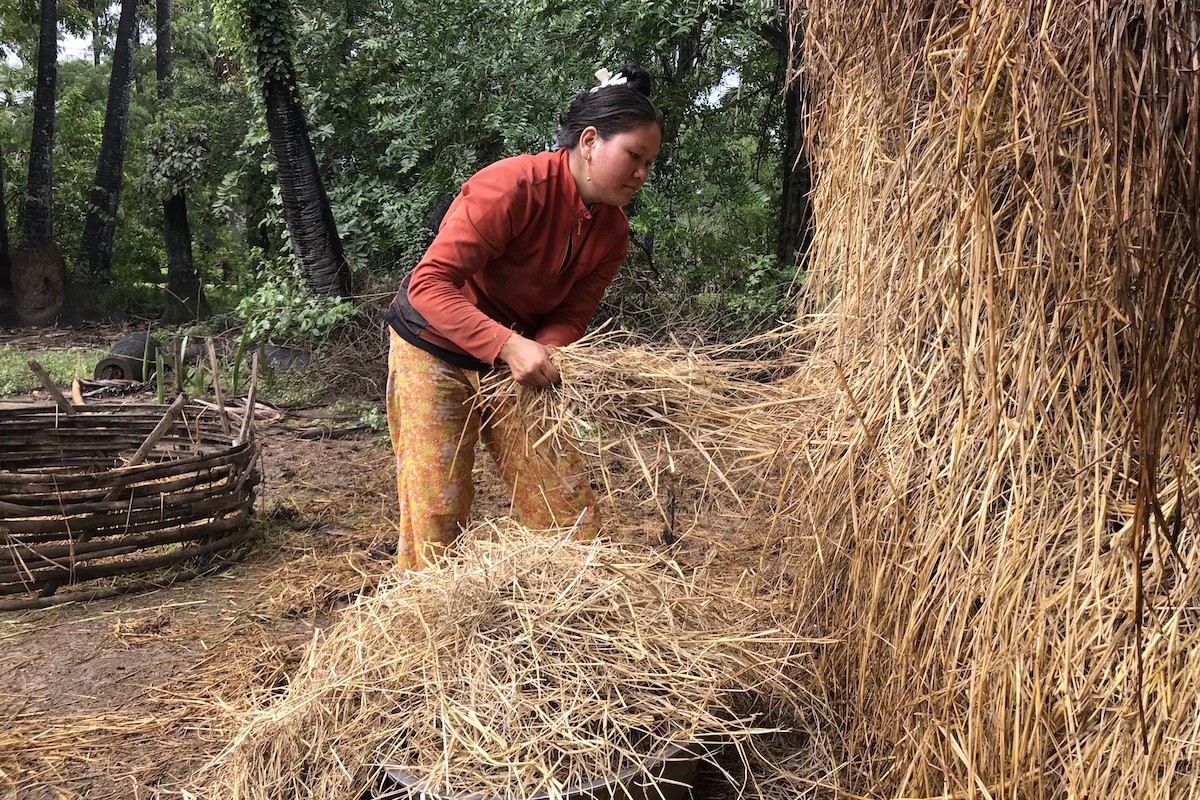The partial collapse of a newly constructed dam in Laos has killed dozens of local villagers and devastated the lives and livelihoods of thousands—and in doing so exposed cracks in the hydropower agenda of the country’s one-party government. The South Korean and Thai companies spearheading the Xe Pian-Xe Namnoy project initially tried to write off the collapse as a natural disaster induced by heavy rains. However, this was very much an avoidable manmade tragedy caused by poor design, construction and operation.
While the Xe Pian-Xe Namnoy tragedy is particularly acute, the rush to transform Laos into “the battery of Southeast Asia” through rapid construction of large hydropower across the country is already a widespread, if largely unacknowledged, human rights and environmental disaster.
[googlemaps https://www.google.com/maps/embed?pb=!1m18!1m12!1m3!1d3373329.8221575427!2d104.67712203803195!3d15.008534172567545!2m3!1f0!2f0!3f0!3m2!1i1024!2i768!4f13.1!3m3!1m2!1s0x0%3A0x0!2zMTXCsDAxJzM2LjAiTiAxMDbCsDM2JzA2LjAiRQ!5e0!3m2!1sen!2sau!4v1533253767942&w=630&h=400]
In a highly restrictive one-party state in which local people have no freedom of expression or access to independent media, and civil society is severely constrained, tens of thousands of people are being forcibly resettled to make way for large-scale hydropower projects and other infrastructure.
Many more communities downstream from these projects, dependent on migratory fish and other river resources for income and food security, have lost livelihoods and food sources without acknowledgement or redress. Some projects are being built in what are legally protected conservation areas, causing severe impacts on areas of high biodiversity significance. Xe Pian-Xe Namnoy was no exception.
Indigenous communities in the reservoir and catchment area have been forcibly resettled under horrific conditions, without sufficient land or even adequate drinking water. Downstream communities have seen the Xe Pian River dry up and the fisheries upon which they depend decimated, without receiving any compensation.
Despite the rhetoric of development surrounding these projects, local communities receive few benefits. The electricity generated is mostly exported to neighbouring countries. Foreign investors—many from neighbouring countries in the region but also from western countries—are granted concessions to develop hydropower projects in agreements made without transparency.
In a country with insufficient institutional capacity to oversee and enforce standards, companies awarded concessions then proceed with their projects with very little oversight, regulation or scrutiny. Transparency International has consistently listed Laos as having one of the highest levels of corruption in Asia. The majority of hydropower revenues are accrued by the slew of companies involved: developers, construction companies, financiers and investors.
Whether the share reaching the government is benefiting the country as a whole is questionable. Regardless, it is certainly local communities that are facing the risks and enduring the severe impacts of these projects—as witnessed in the recent Xe Pian-Xe Nam Noy disaster. The lack of proper regulation and oversight to ensure projects are built safely and to high standards may well have contributed to the collapse of the dam.
One might think the international community would be united in expressing concerns over the Lao hydropower agenda, particularly as the country now turns to damming the mainstream of the Mekong River, with the potential for widespread impacts across multiple countries within the lower Mekong basin. But instead, a number of international donors and financial institutions are actively supporting the Lao hydropower sector. At the forefront is the World Bank, which has long highlighted its Nam Theun 2 project in central Laos as a global model—even as that project has failed to achieve its lofty social and environmental goals. Based at least in part on the myth of Nam Theun 2’s success, the World Bank Group’s International Finance Corporation, as well as the European Union, the governments of Australia and Germany and other international donors, have subsequently promoted the concept of “sustainable hydropower” in Laos. In doing so they have ignored or underplayed the vast human rights implications of supporting large infrastructure projects in a country where local citizens are severely restricted from voicing opposition to these plans or advocating for better compensation, safer construction or alternative development strategies.
The World Bank, the Asian Development Bank and other international donors have consistently favoured the interests of private developers over local communities in Laos, by promoting and facilitating models of hydropower financing that allow outside investors to largely avoid or limit their responsibility for the social and environmental costs of their projects. While this has helped create an attractive investment environment and facilitate the Lao hydropower rush—at least 90 large hydropower projects are underway or recently completed in the country—it has pushed the costs and risks of these projects on to local communities, without their informed consent or realistic ability to say “no”.
In addition to ignoring the rights of local communities in their enthusiastic support for the hydropower agenda in Laos, international donors have overlooked or discounted the seemingly obvious fact that, in fairness to the country, it does not have sufficient capacity to manage and properly oversee so many large hydropower projects at the same time.
While the responsibility for the Xe Pian-Xe Namnoy tragedy rests primarily with the company building the project (and the Lao authorities who should have overseen it), the international community, and particularly the institutions and donor governments promoting hydropower in Laos, also share responsibility. The condolences recently expressed by the World Bank and Asian Development Bank are not enough. These institutions need to own up to their own roles in the ongoing Lao hydropower tragedy and make amends. It is well past the time that international donors cease their support for high-risk infrastructure projects in countries where those most affected have the least voice.





